Abstract
The course of haemolytic anaemia in NZB mice has been altered by injection of spleen cells from diseased mice into younger ones before the onset of clinical disease. Recipients greater than 6 weeks of age developed early-onset autoimmune disease, recipients less than 6 weeks of age developed early-onset autoimmune disease, recipients less than 6 weeks of age recovered from early induced disease and showed a delay in the onset of spontaneous disease as compared with untreated NZB mice. This delay was due to the induction in the young mice of splenic suppressor cells. These cells were non-adherent to nylon wool and suppressed autoantibody formation on transfer to old Coombs-positive recipients. Suppressor cells active against autoantibody formation on transfer to old Coombs-positive recipients. Suppressor cells active against autoantibody-producing cells may be present in young untreated NZB mice, but not in sufficient numbers to suppress autoantibody production on adoptive transfer to Coombs-positive; however, when Ig-negative cells from the spleens of very young NZB mice were transferred together with Ig-positive cells from Coombs-positive donor mice to irradiated NZB recipients, the autoantibody production of the transferred B cells was suppressed in some cases. Suppressor cell activity could also be induced by co-culture of spleen cells from old Coombs-positive and young Coombs-negative NZB mice in vitro.
Full text
PDF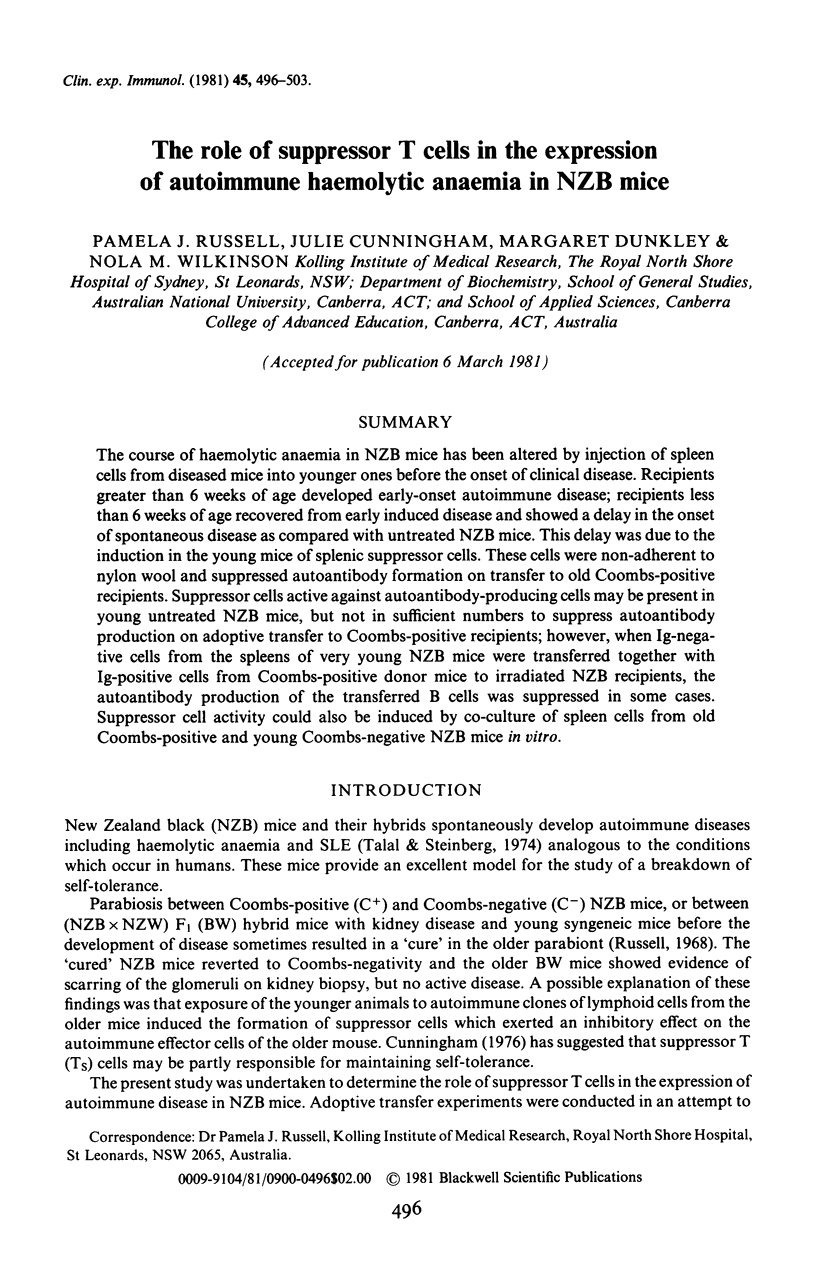
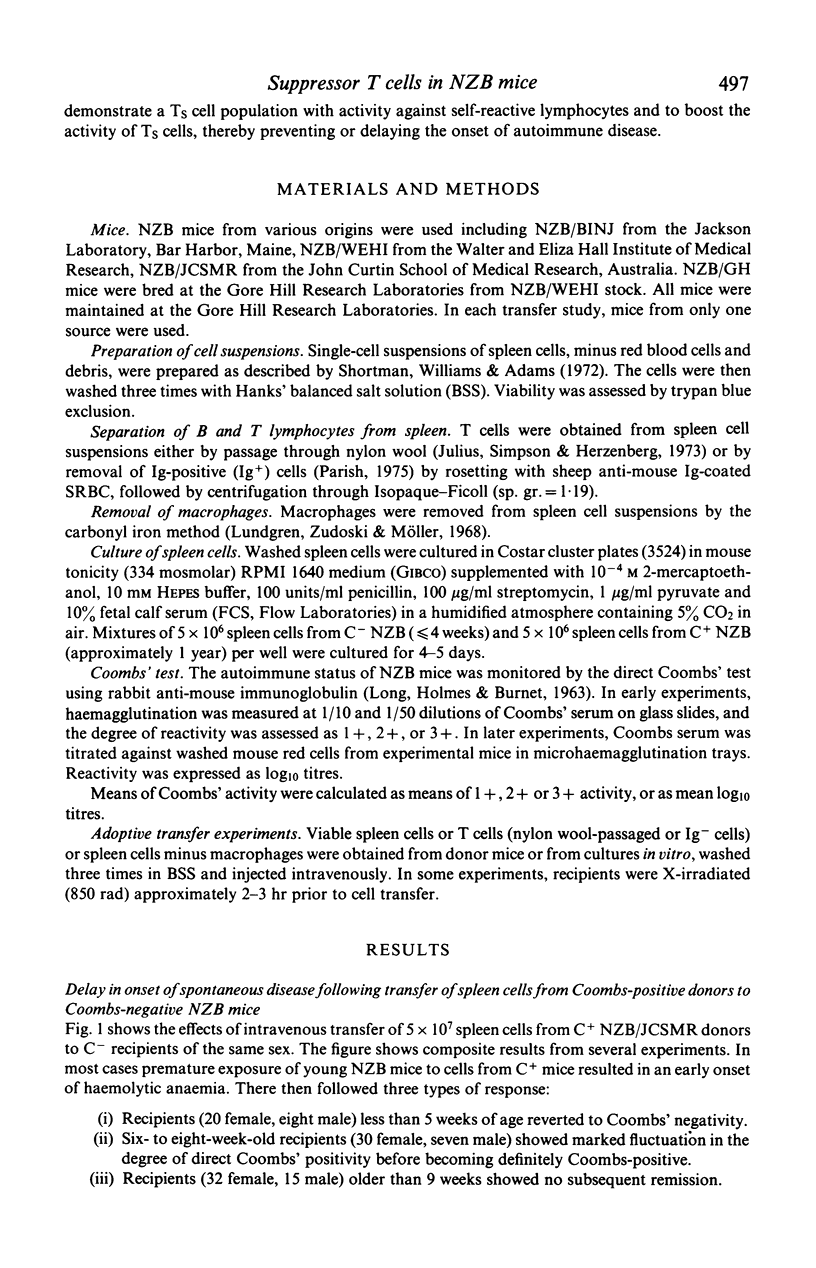
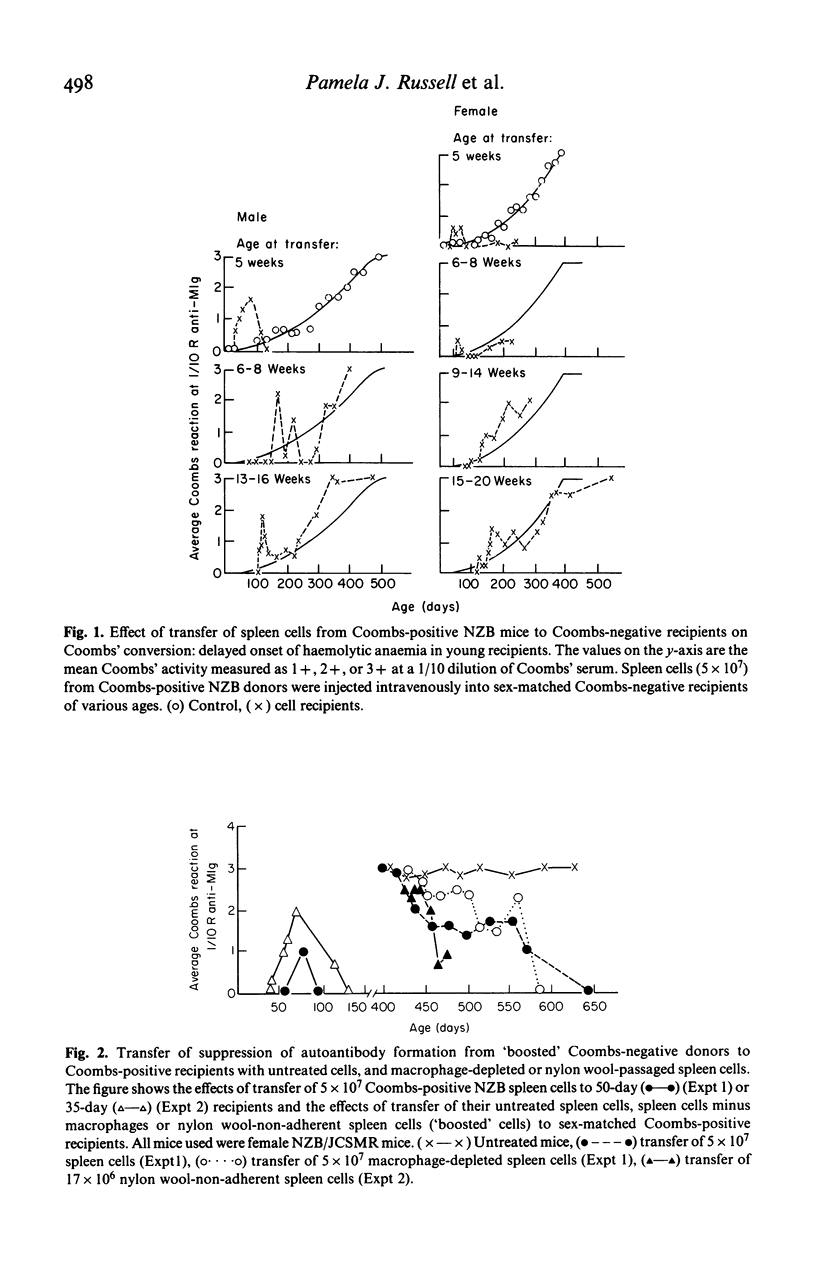
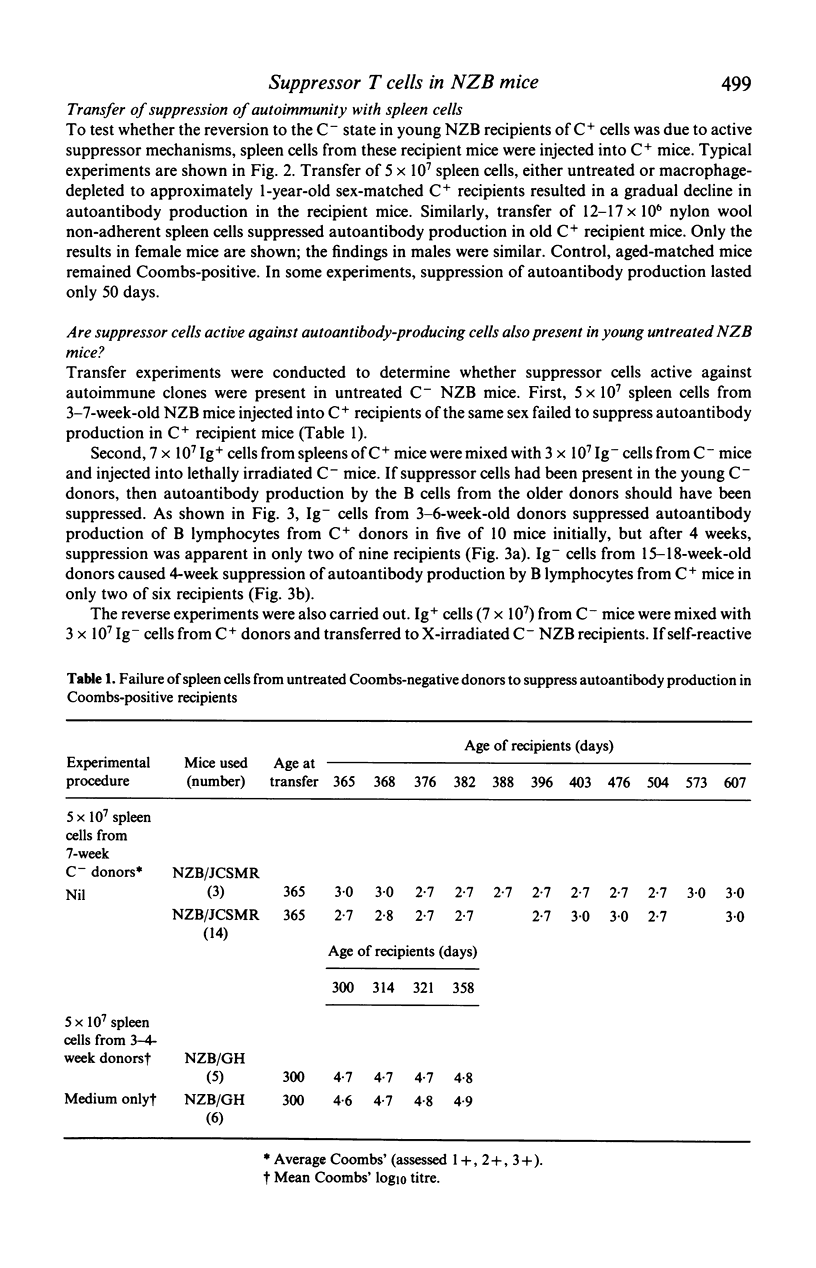
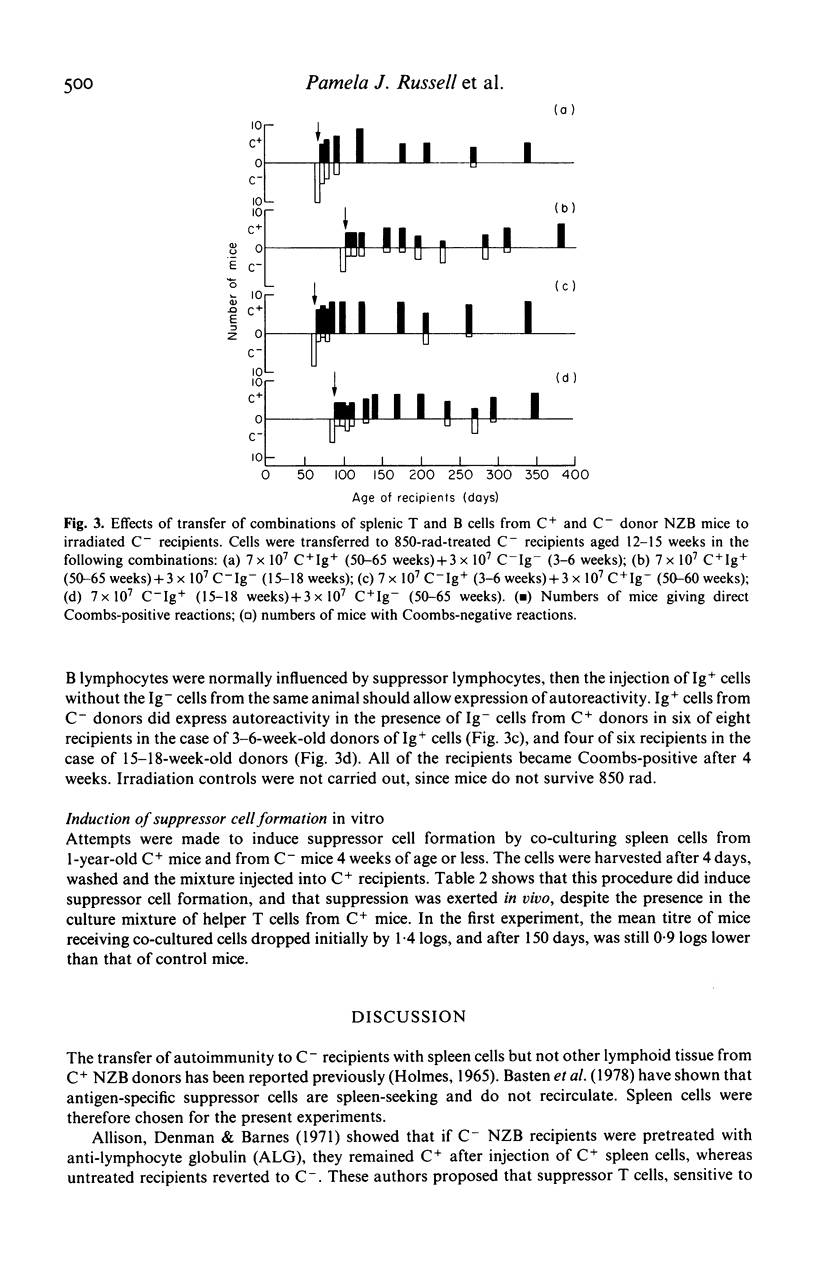


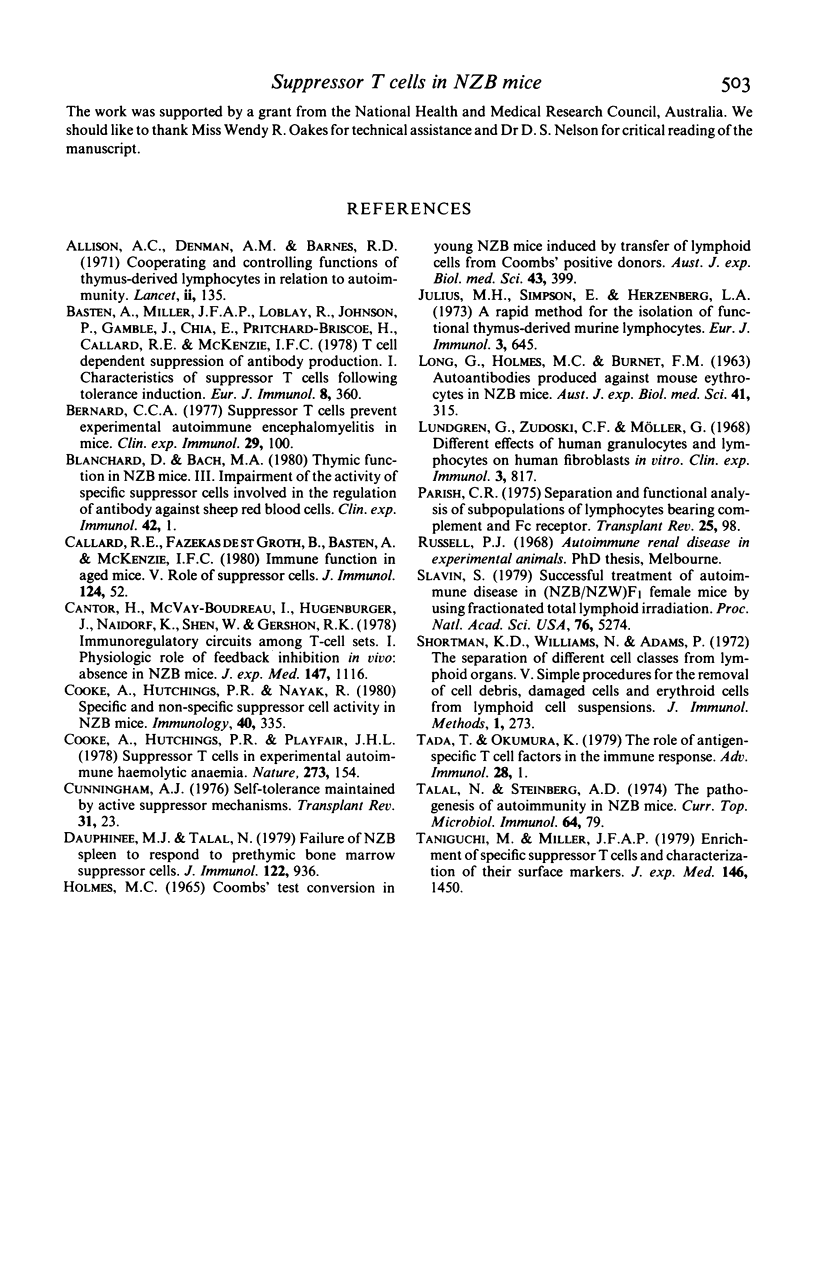
Selected References
These references are in PubMed. This may not be the complete list of references from this article.
- Allison A. C., Denman A. M., Barnes R. D. Cooperating and controlling functions of thymus-derived lymphocytes in relation to autoimmunity. Lancet. 1971 Jul 17;2(7716):135–140. doi: 10.1016/s0140-6736(71)92306-3. [DOI] [PubMed] [Google Scholar]
- Basten A., Miller J. F., Loblay R., Johnson P., Gamble J., Chia E., Pritchard-Briscoe H., Callard R., McKenzie I. F. T cell-dependent suppression of antibody production. I. Characteristics of suppressor T cells following tolerance induction. Eur J Immunol. 1978 May;8(5):360–370. doi: 10.1002/eji.1830080513. [DOI] [PubMed] [Google Scholar]
- Bernard C. C. Suppressor T cells prevent experimental autoimmune encephalomyelitis in mice. Clin Exp Immunol. 1977 Jul;29(1):100–109. [PMC free article] [PubMed] [Google Scholar]
- Blanchard D., Bach M. A. Thymic function in NZB mice. III. Impairment of the activity of specific suppressor cells involved in the regulation of antibody production against sheep red blood cells. Clin Exp Immunol. 1980 Oct;42(1):1–9. [PMC free article] [PubMed] [Google Scholar]
- Cantor H., McVay-Boudreau L., Hugenberger J., Naidorf K., Shen F. W., Gershon R. K. Immunoregulatory circuits among T-cell sets. II. Physiologic role of feedback inhibition in vivo: absence in NZB mice. J Exp Med. 1978 Apr 1;147(4):1116–1125. doi: 10.1084/jem.147.4.1116. [DOI] [PMC free article] [PubMed] [Google Scholar]
- Cooke A., Hutchings P. R., Playfair J. H. Suppressor T cells in experimental autoimmune haemolytic anaemia. Nature. 1978 May 11;273(5658):154–155. doi: 10.1038/273154a0. [DOI] [PubMed] [Google Scholar]
- Cooke A., Hutchings P., Nayak R. Specific and non-specific suppressor cell activity in NZB mice. Immunology. 1980 Jul;40(3):335–342. [PMC free article] [PubMed] [Google Scholar]
- Cunningham A. J. Self-tolerance maintained by active suppressor mechanisms. Transplant Rev. 1976;31:23–43. doi: 10.1111/j.1600-065x.1976.tb01451.x. [DOI] [PubMed] [Google Scholar]
- Dauphinée M. J., Talal N. Failure of NZB spleen to respond to prethymic bone marrow suppressor cells. J Immunol. 1979 Mar;122(3):936–941. [PubMed] [Google Scholar]
- HOLMES M. C. COOMBS TEST CONVERSION IN YOUNG NZB MICE INDUCED BY TRANSFER OF LYMPHOID CELLS FROM COOMBS POSITIVE DONORS. Aust J Exp Biol Med Sci. 1965 Jul;43:399–404. doi: 10.1038/icb.1965.73. [DOI] [PubMed] [Google Scholar]
- Julius M. H., Simpson E., Herzenberg L. A. A rapid method for the isolation of functional thymus-derived murine lymphocytes. Eur J Immunol. 1973 Oct;3(10):645–649. doi: 10.1002/eji.1830031011. [DOI] [PubMed] [Google Scholar]
- LONG G., HOLMES M. C., BURNET F. M. AUTOANTIBODIES PRODUCED AGAINST MOUSE ERYTHROCYTES IN NZB MICE. Aust J Exp Biol Med Sci. 1963 Aug;41:315–322. doi: 10.1038/icb.1963.31. [DOI] [PubMed] [Google Scholar]
- Lundgren G., Zukoski C. F., Möller G. Differential effects of human granulocytes and lymphocytes on human fibroblasts in vitro. Clin Exp Immunol. 1968 Oct;3(8):817–836. [PMC free article] [PubMed] [Google Scholar]
- Parish C. R. Separation and functional analysis of subpopulations of lymphocytes bearing complement and Fc receptors. Transplant Rev. 1975;25:98–120. doi: 10.1111/j.1600-065x.1975.tb00727.x. [DOI] [PubMed] [Google Scholar]
- Shortman K., Williams N., Adams P. The separation of different cell classes from lymphoid organs. V. Simple procedures for the removal of cell debris. Damaged cells and erythroid cells from lymphoid cell suspensions. J Immunol Methods. 1972 May;1(3):273–287. doi: 10.1016/0022-1759(72)90005-1. [DOI] [PubMed] [Google Scholar]
- Slavin S. Successful treatment of autoimmune disease in (NZB/NZW)F1 female mice by using fractionated total lymphoid irradiation. Proc Natl Acad Sci U S A. 1979 Oct;76(10):5274–5276. doi: 10.1073/pnas.76.10.5274. [DOI] [PMC free article] [PubMed] [Google Scholar]
- Tada T., Okumura K. The role of antigen-specific T cell factors in the immune response. Adv Immunol. 1979;28:1–87. doi: 10.1016/s0065-2776(08)60799-3. [DOI] [PubMed] [Google Scholar]
- Talal N., Steinberg A. D. The pathogenesis of autoimmunity in New Zealand black mice. Curr Top Microbiol Immunol. 1974;64(0):79–103. doi: 10.1007/978-3-642-65848-8_3. [DOI] [PubMed] [Google Scholar]
- Taniguchi M., Miller J. F. Enrichment of specific suppressor T cells and characterization of their surface markers. J Exp Med. 1977 Nov 1;146(5):1450–1454. doi: 10.1084/jem.146.5.1450. [DOI] [PMC free article] [PubMed] [Google Scholar]


